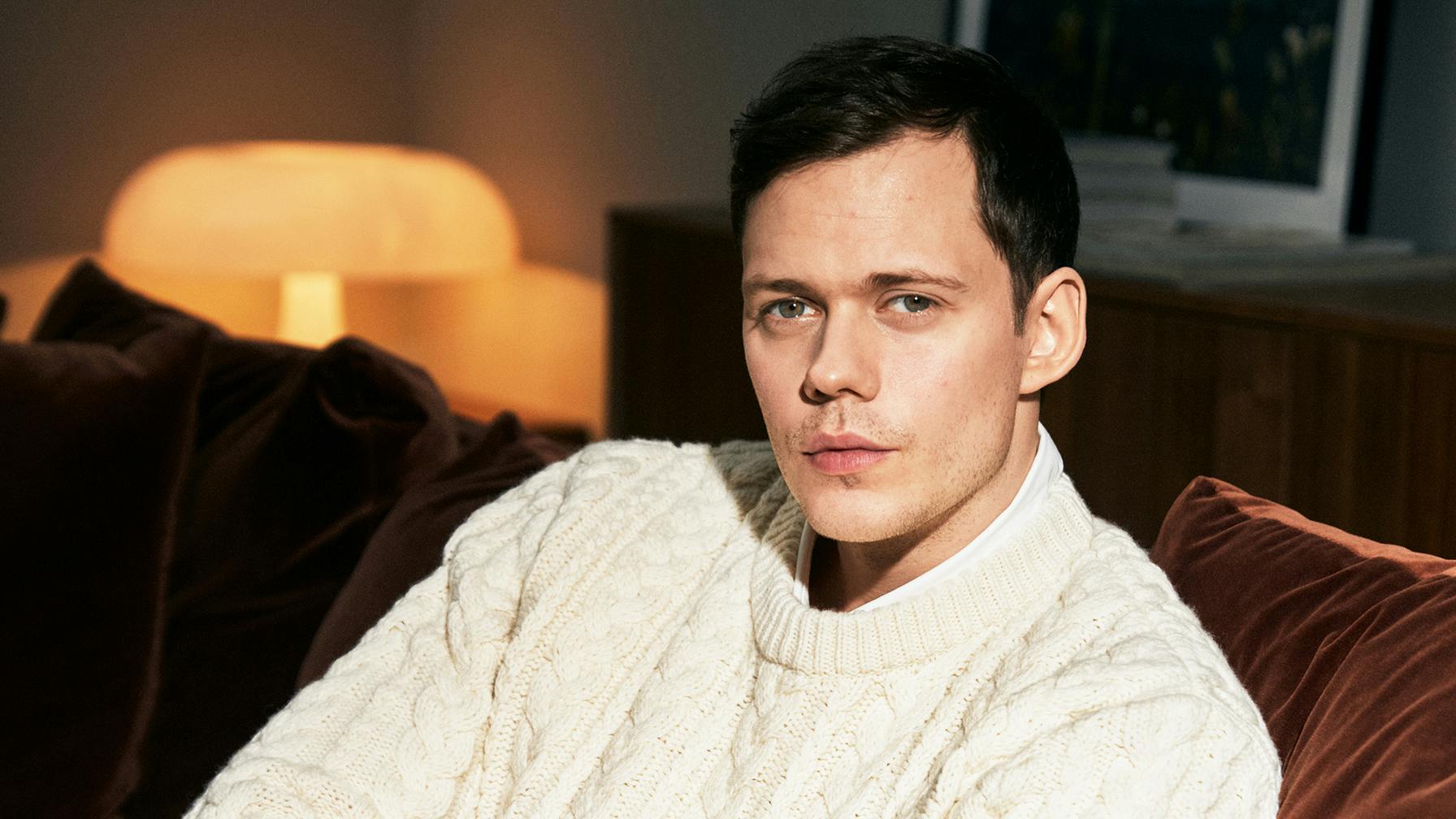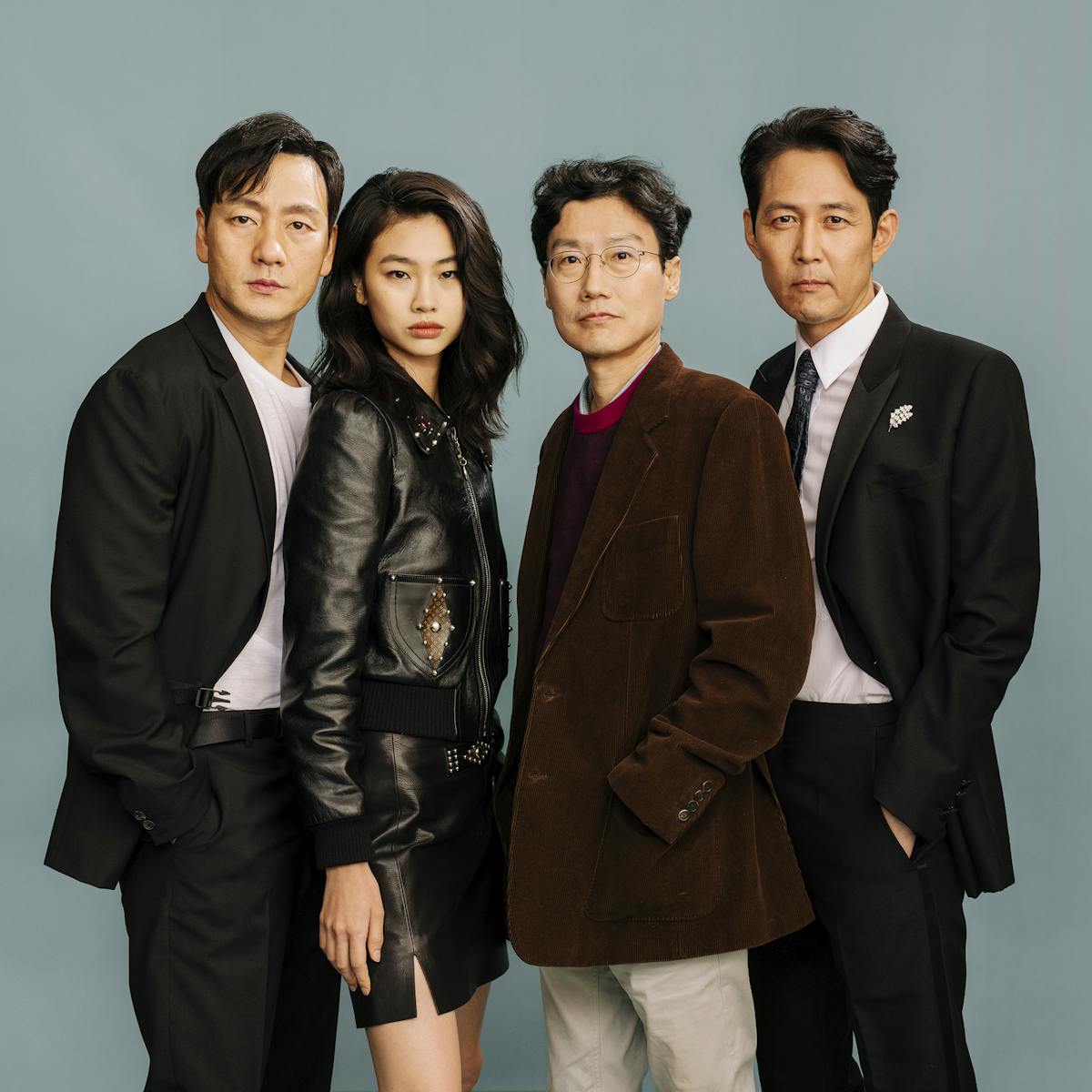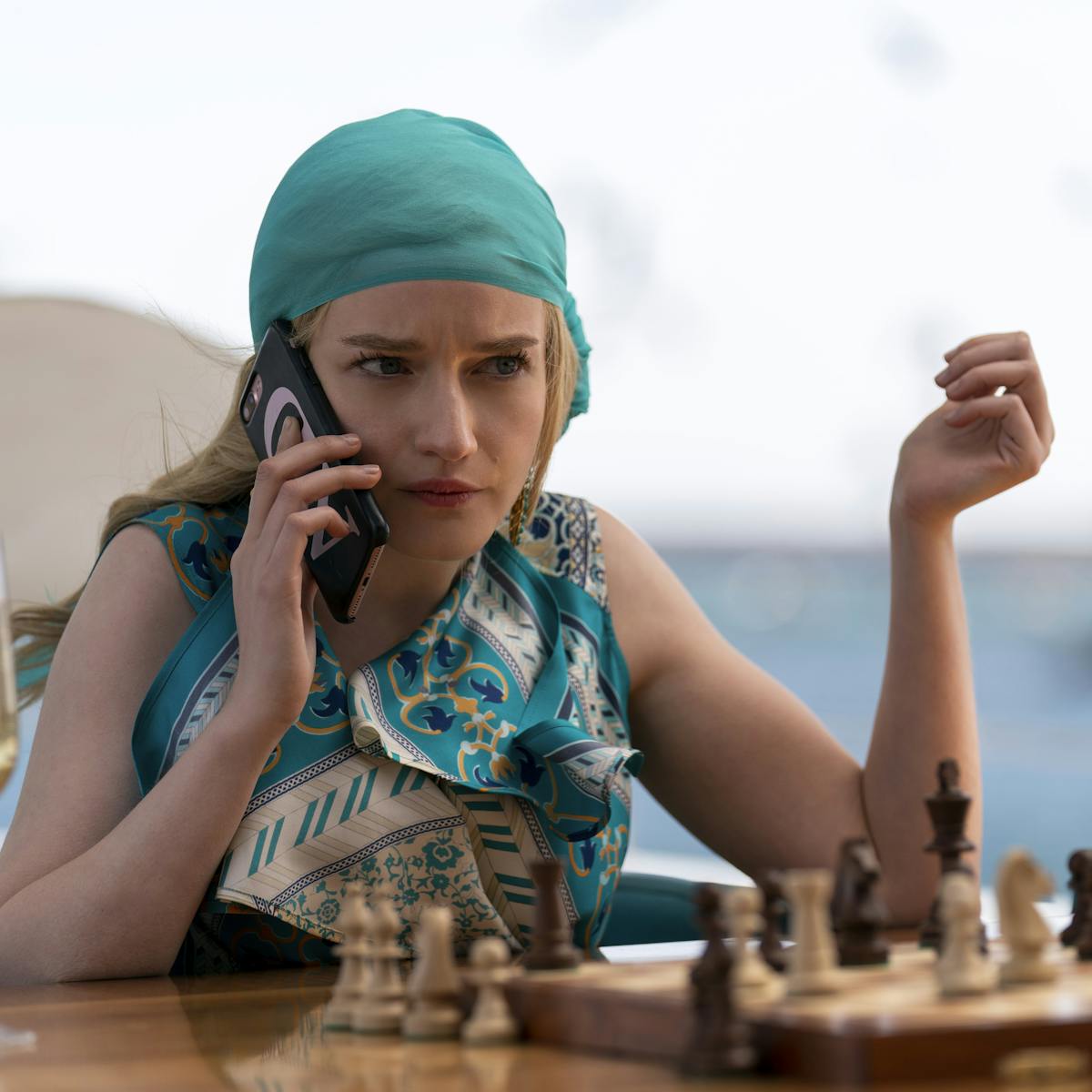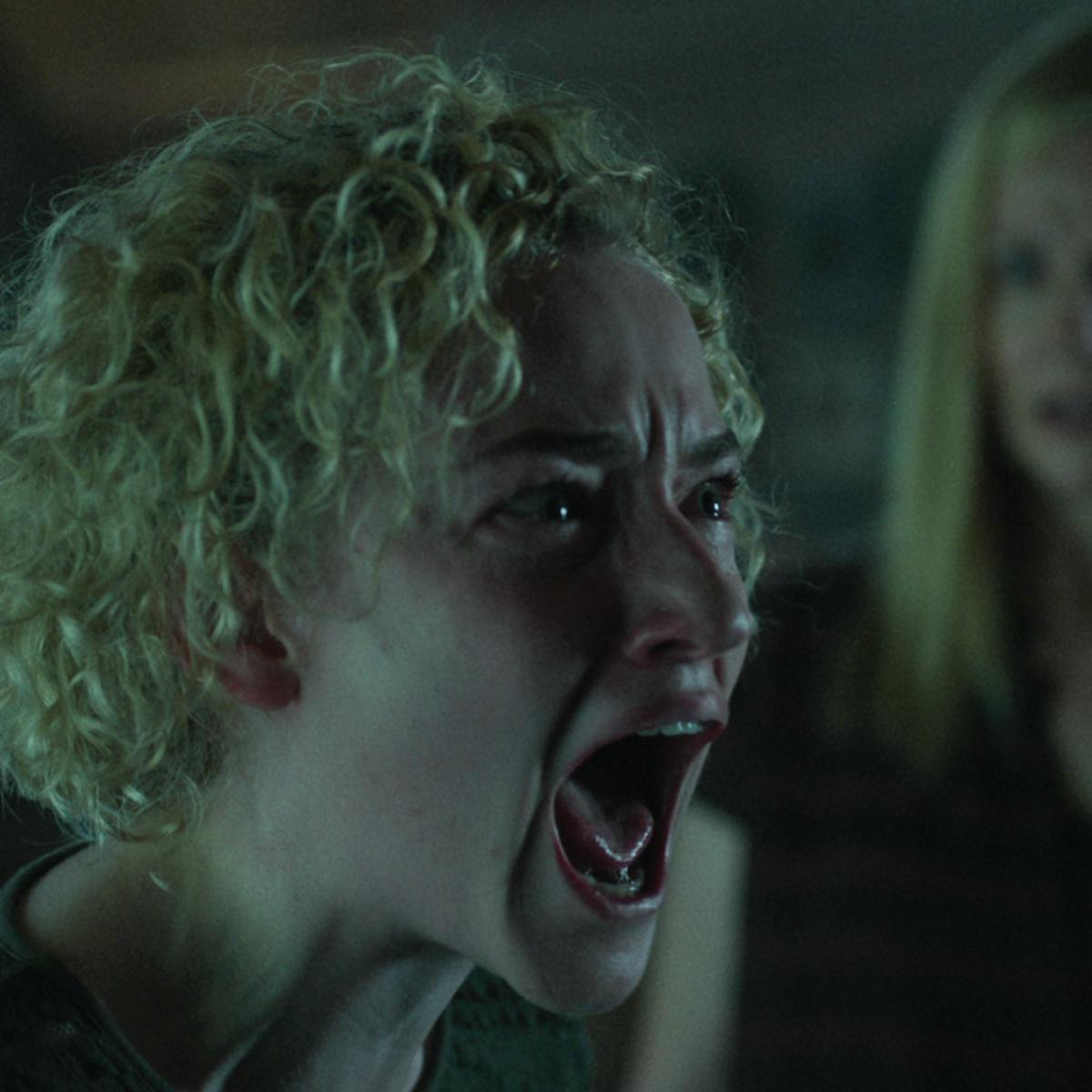Playing Clark Olofsson, one of Sweden's most notorious criminals, brought the actor back home.
Bill Skarsgård and Clark Olofsson have one thing in common: charm. Bill Skarsgård has used his to captivate audiences with roles in It, Castle Rock, Atomic Blonde, and Hemlock Grove. Clark Olofsson used his in less artistic and more criminally-minded ways, which Skarsgård brilliantly portrays as the lead in the Swedish series Clark.
Written and directed by acclaimed Grammy-winning music video and film director Jonas Åkerlund, Clark is the story of one of Sweden’s most notorious criminals who — with counts of drug trafficking, theft, assault, bank robberies, and attempted murder to his name — charmed a group of hostages over the course of a six-day bank robbery at Norrmalmstorg, leading to the coining of the term “Stockholm Syndrome.” Based on Olofsson’s autobiography, Clark tells the truths and lies of an infamous man over the course of his crime sprees.
“Some people idolized him, and some of them really hated him,” says Skarsgård of the man portrayed onscreen, “but they all talked about him.”
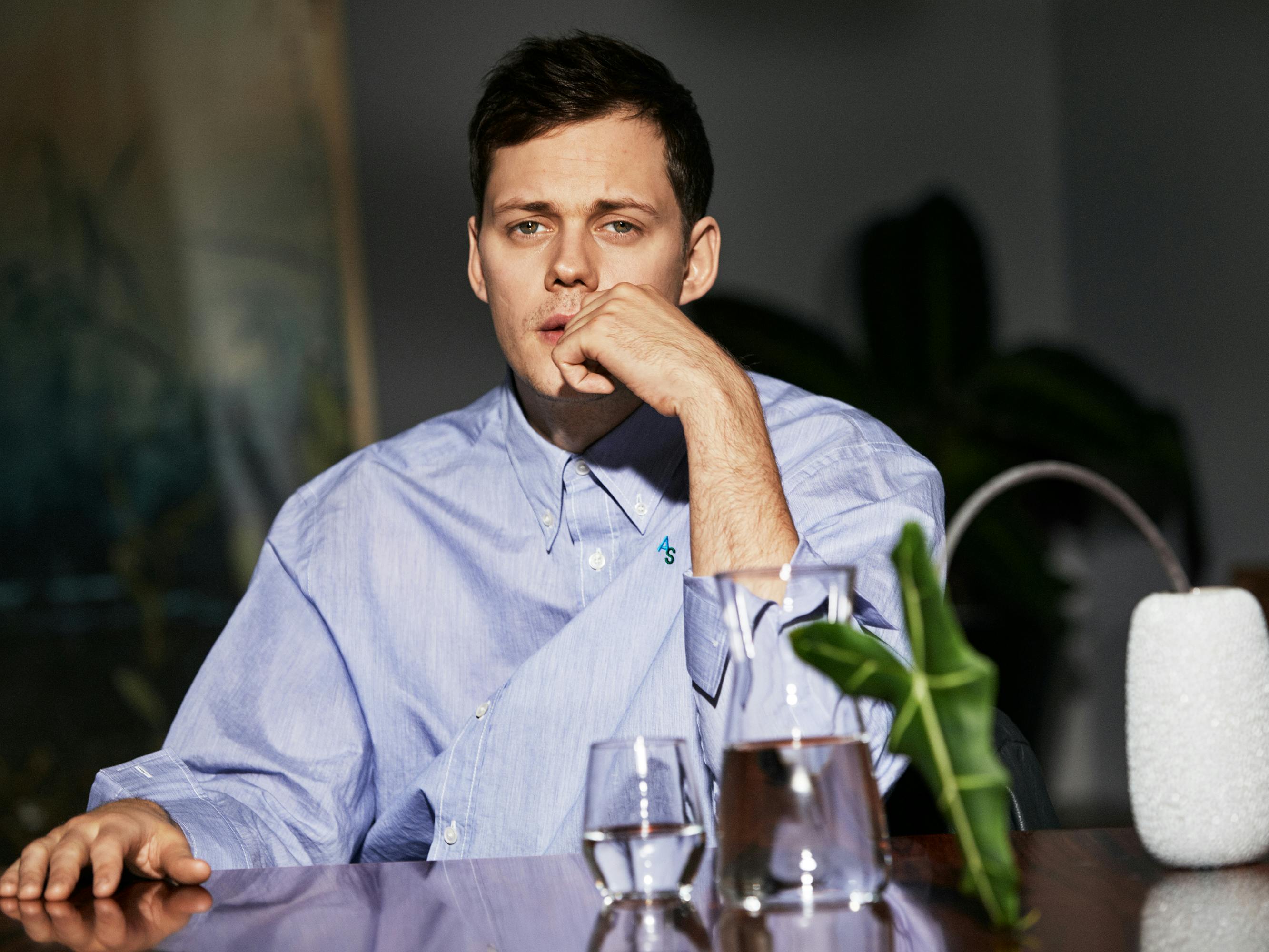
Bill Skarsgård
Queue: How did the project come to be?
Bill Skarsgård: I love working with Jonas. He came to me like, “Hey, they’ve reached out to me to do a show of Clark Olofsson’s life. Would you be into doing that?” But there wasn’t really a project at that point. It was just an idea. They had the rights to his story. And just scrolling through Clark’s Wikipedia page, it was like, this neverending debauchery and mischief. We know of Clark from the Stockholm Syndrome robbery. Jonas knew more about him because he’s older, so he had more familiarity with who Clark was. But then once we started digging into it, his life is way crazier than you can imagine.
What was it like working with Jonas?
BS: Partnering with him on that journey, it was just so cool. We ended up developing a shorthand because both of us knew the character so well. Clark’s character makes both of us laugh so much because he’s such an idiot. It was a lot of fun. I think Jonas is one of the best editors that you could find, and he covers everything with an editor’s approach. That was his background before, which means that he shoots so much coverage, everything in the scene. And I’m an actor who will give you something different every time you say action. When I started shooting with him, I was like, “This is kind of crazy. I hope that he sees what I’m doing here because I keep doing it differently.” And what’s so remarkable about it is that halfway through the shoot, we had a hiatus for three months, which meant that we could go back and rewrite a few things and Jonas could start editing. When we knew a little bit about what went right and what went wrong with that first section of the production, the show became way better because of it. He showed me some of the stuff that he edited and I was like, “Oh shit!”
He edits in a way where he catches every moment. He just cuts every moment that he likes and gets them in there, which gives me more confidence. It was like, “Okay, I’m going to keep giving him everything because there’s always a camera catching it.” There are no rules to it. And I don’t think I’ve ever worked with someone like that before. You learn from working with someone like that, seeing what he does. As long as the rhythm is there, as long as the reactions are there, fuck continuity.
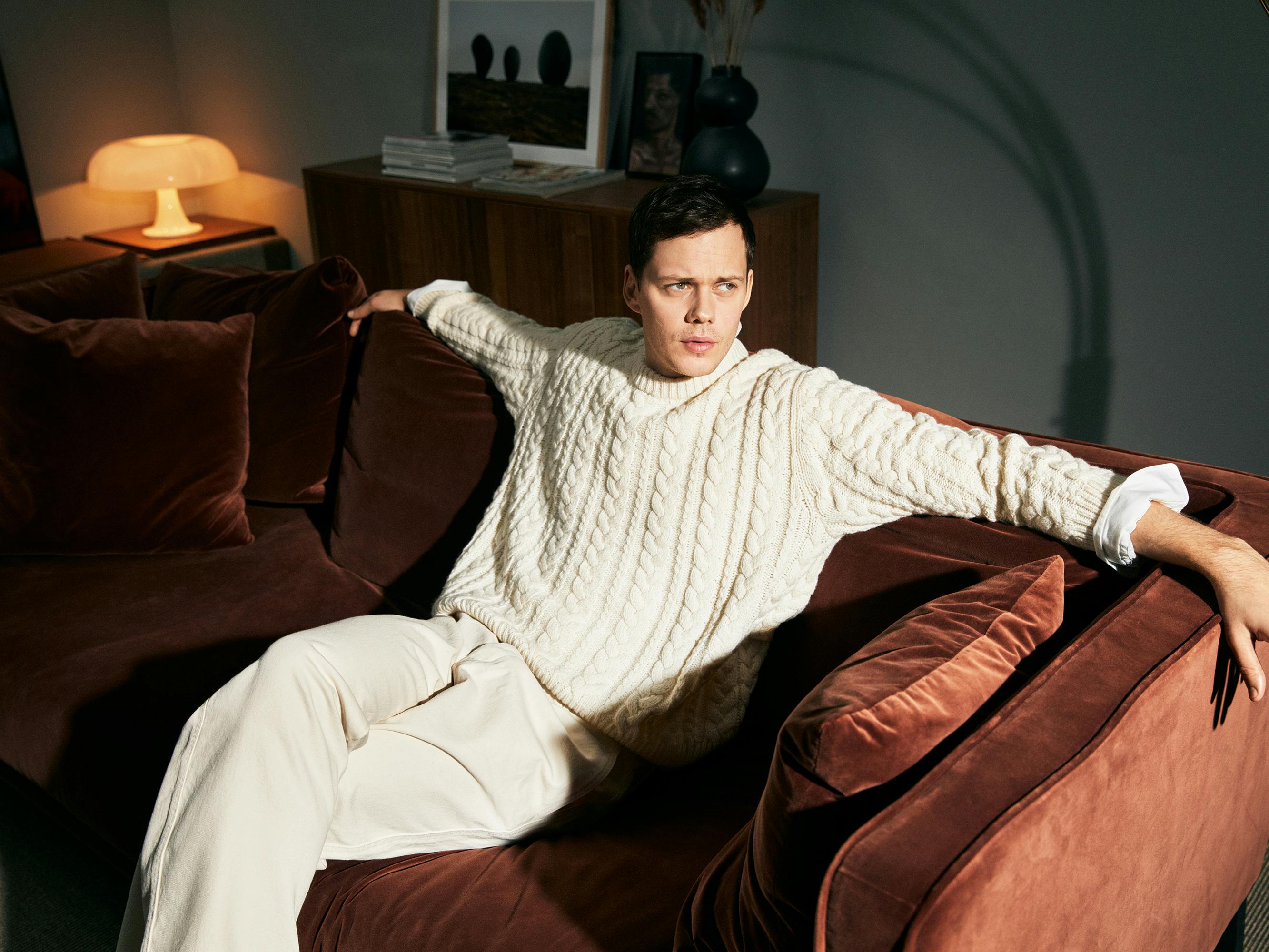
Bill Skarsgård
What was one of your favorite scenes to film?
BS: I got to work with one of my best friends, Adam Lundgren, who plays Kurre. The scene of Clark and Kurre’s trip on the boat, that whole week of shooting, was all scripted in terms of action. But the dialogue, it was basically just the two of us riffing and improvising in fake beards and wigs as these very big characters. As much fun as it looks like they’re having — that’s as much fun we had shooting it. The scenes, they’re not structured, really. It’s montages, and things are happening, but all of it was just me and Adam filling the page. So it could be a moment where it says on the script, “Clark and Kurre run from the cops.” Then it’s like, “what do we get to do with that?” The raw footage of that is probably like an hour long because we would just keep rolling. It’s so much fun for an actor to just go in being so comfortable in the character that they can freely improvise. So much fun exploring that together with one of my best friends. And what’s funny as well, my accent in the movie is from where Adam’s from in real life, and his accent in the movie is from where I’m from in real life. So we also swapped accents, which was so bizarre.
What work goes into creating the accent?
BS: I love accents and voice work. I’ve done that for 10 years because English isn’t my mother tongue. So every character I’ve done, I’ve needed to do some sort of voice acting for American roles or English roles. I haven’t worked in Sweden in 10 years, so coming back home, I was like, okay, we’re doing Clark Olofsson, I’m just going to do the same thing I do with all my characters, which is finding the voice. He has a very particular way of talking. A lot of his personality is in how he speaks. There’s an energy to how he talks that I wanted to capture, and his accent is very idiosyncratic. It’s his own dialect.
It was so much fun just spending hours studying the way he speaks and trying to find that rhythm and pattern in myself. And also the crazy thing about it is that I always record my voices. So I record it and I listen back, and I record and listen back. I committed to it. It really helps me find the role, in the way the character talks and the rhythm to it. Once I tapped into that, the rhythm of the voice also became the rhythm of the body and everything else.
